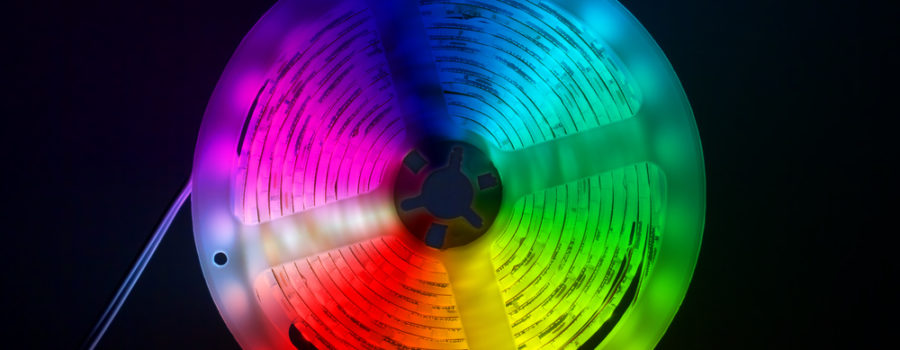Highlighting LED
LED lighting is the way of the future – a modern lighting technology that is brighter, lasts longer and saves more energy than traditional types of illumination.
In order to appreciate how innovative and modern LED lighting is, one should explore the history of its predecessors. Gary Allen, a physicist with GE Lighting for over 25 years, discussed this background in his TED Talk, A Lighting Revolution. In his presentation, Gary catalogued 3 main lighting phases throughout history – incandescent, discharge lighting, and solid-state lighting.
1. Incandescent
• Light as byproduct of heat
• Process = heating metal wires without burning them out by closing them in vacuum tubes
• Maximum efficiency = 95-99% of energy wasted as heat
• Common example: Incandescent light bulb
2. Discharge lighting
• Light as byproduct of heat
• Process = vaporize wires creating luminous gas and sealing them inside tubes
• Common examples: Florescent, Neon
• Maximum efficiency = 66% of energy wasted as heat
3. Solid-state lighting
• Heat as byproduct of light
• Process = microchip illuminates a tiny Light Emitting Diode or LED, heat sinks diffuse heat
• Common example: LED
• Maximum efficiency = 66% of energy wasted as heat, potential for as low as 20%
What is the chief difference that fueled these breakthroughs? Efficiency.
Efficiency = Lumens or amount of light generated / Watts or electricity consumed
Due to the cooler process and heat sink that protects them, LED lighting products have a different definition for lifetime compared to incandescent or discharge lighting . Instead of burning out, LEDs undergo lumen depreciation where brightness of the LED dims gradually over time. When lumen output decreases by 30%, an LED is considered at end-of-life.
Advancement in lighting efficiency over the past two centuries has been steady and progressive. Lasting ten times longer than a traditional bulb and saving up to 90% more energy, LED lighting technology provides unbelievable benefits.
LED’s Top 10 Capabilities
1. Long Life – Last decades, not months or years.
2. Small – Compact and light, LEDs are the tiniest light source.
3. Precise – Aim the light right where you need it, instead of light flooding out in all directions.
4. Efficient – Less energy lost in heat, longer lifespan.
5. Color – One LED can display many colors, with a wide range of hues.
6. Low Cost – Savings in electricity. Cost to purchase continues to decrease.
7. Control – Lights can be dimmed or turned on/off when you schedule them to.
8. Safe – Does not contain mercury or other toxic gasses.
9. Easy – Easy to install, service and transport.
10. Bright – LED lights are brighter and can be seen from a greater distance.
LEDs have a significant impact on the illuminated signage market, with high-efficiency white LEDs typically rated for 50,000+ hours of life or about 12+ years of operation. Choosing the right materials and design for your signage is a big decision, ASI can help you with the process.
Source:
Allen, Gary (2013). A Lighting Revolution [Video file]. Retrieved from https://www.youtube.com/watch?v=ghwxAlMZF_A

